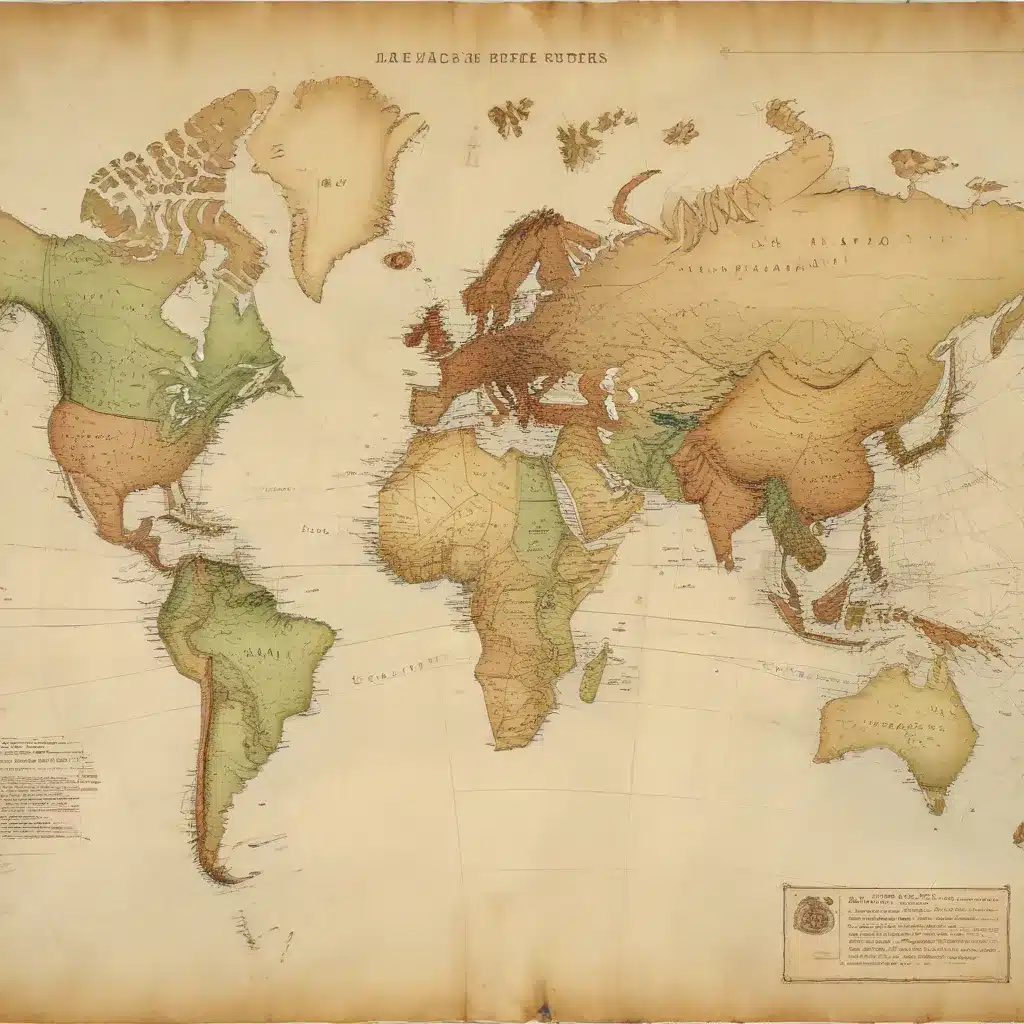
As a seasoned cultural historian and curator, I’m deeply honored to share the rich tapestry of the Cook Islands’ heritage, history, and traditions. At the heart of this vibrant Pacific nation lies a fascinating story of intricate trade networks and exchange systems that have shaped its unique identity over centuries.
The Foundations of Interconnectedness
The Cook Islands, a scattering of 15 atolls and volcanic islands, have long been a hub of cultural exchange and economic activity in the South Pacific. Even before the arrival of European explorers and colonists, the ancestors of the Cook Islanders – the Polynesians – had developed sophisticated systems of maritime trade and resource sharing.
The Polynesian voyaging canoes, with their advanced navigational skills and intricate knowledge of wind patterns and ocean currents, facilitated the movement of people, goods, and ideas across vast distances. From the atolls of Pukapuka to the verdant high islands of Rarotonga, these seafaring communities forged extensive networks, exchanging everything from prized textiles and carved artifacts to food staples and medicinal plants.
Unraveling the Pre-colonial Trade Routes
Archaeologists have uncovered a wealth of evidence highlighting the interconnectedness of the pre-colonial Cook Islands. Excavations at sites like Arai-te-Tonga on Rarotonga have yielded a diverse array of imported materials, including basalt adzes from Samoa, obsidian from the Mariana Islands, and shell ornaments from as far away as the Marquesas. These findings paint a picture of a thriving regional economy, where specialized goods and resources were actively traded between the various island groups.
The atolls of the Northern Cook Islands, in particular, served as important nodes in these expansive trade networks. Pukapuka, for instance, was renowned for its production of intricate pandanus textiles, which were highly sought after throughout Polynesia. In exchange, the Pukapukans would receive prized foodstuffs, such as taro and coconuts, from their neighbors to the south.
The Arrival of European Influence
The arrival of European explorers and missionaries in the 18th and 19th centuries ushered in a new era of transformation for the Cook Islands. While these encounters disrupted many traditional trade and exchange practices, they also introduced new goods, technologies, and economic opportunities.
The establishment of the Cook Islands as a British protectorate in the late 19th century further integrated the islands into global trade networks. Copra (dried coconut meat) became a major export, while imported textiles, tools, and other manufactured goods began to flow into the local markets. The introduction of the colonial monetary system and the growth of commercial agriculture also had a significant impact on the existing exchange systems.
Adapting to Changing Times
Despite these profound changes, the Cook Islanders demonstrated remarkable resilience and adaptability. They found ways to incorporate new elements into their traditional practices, creating a unique synthesis of old and new.
For instance, the production of tapa cloth, a time-honored craft, evolved to incorporate European-introduced dyes and printing techniques. Similarly, the intricate wood carvings and woven handicrafts that are now synonymous with the Cook Islands’ cultural identity incorporated design elements and materials from outside influences.
Revitalizing Traditional Exchange Practices
In recent decades, there has been a concerted effort to revive and preserve the traditional trade and exchange practices of the Cook Islands. Organizations like the Cook Islands National Museum and the Ministry of Cultural Development have played a crucial role in this endeavor, working to document, celebrate, and share the islands’ rich cultural heritage.
One such initiative is the annual Punanga Nui Market in Rarotonga, where local artisans, farmers, and fishermen gather to exchange their wares, fostering a sense of community and preserving the time-honored tradition of face-to-face trading. Visitors to the Cook Islands can immerse themselves in this vibrant marketplace, witnessing firsthand the enduring spirit of interconnectedness that has defined the islands for generations.
The Cook Islands Library and Museum: Preserving the Past, Inspiring the Future
At the Cook Islands Library and Museum, visitors can delve deeper into the intricacies of the islands’ historical trade networks and exchange systems. Our permanent and temporary exhibitions showcase a vast array of artifacts, from intricate weavings and carved wooden sculptures to historical documents and photographic archives.
One of the highlights of our collection is the extensive display of traditional voyaging canoes, which serve as a tangible reminder of the seafaring prowess and navigational expertise that underpinned the expansive trade routes of the past. Visitors can learn about the construction techniques, the specialized tools used, and the cultural significance of these remarkable vessels.
In addition to our museum offerings, the Cook Islands Library and Museum also hosts a variety of educational programs and workshops that aim to preserve and share the islands’ cultural heritage. From hands-on demonstrations of traditional weaving and carving to storytelling sessions that bring the legends and myths of the Cook Islands to life, these initiatives foster a deep appreciation for the enduring legacy of the islands’ trade and exchange systems.
Embracing the Future, Honoring the Past
As the Cook Islands continue to navigate the challenges and opportunities of the modern world, it is crucial that we remain steadfast in our commitment to preserving and celebrating the rich tapestry of our cultural heritage. The historical trade networks and exchange systems that have shaped our islands over centuries are not merely relics of the past, but living, breathing testaments to the ingenuity, resilience, and interconnectedness of our people.
By exploring the stories and artifacts housed within the Cook Islands Library and Museum, we can gain a deeper understanding of our shared past and be inspired to forge new pathways of cultural exchange and economic cooperation. In doing so, we honor the legacy of our ancestors and ensure that the unique identity of the Cook Islands continues to thrive for generations to come.

